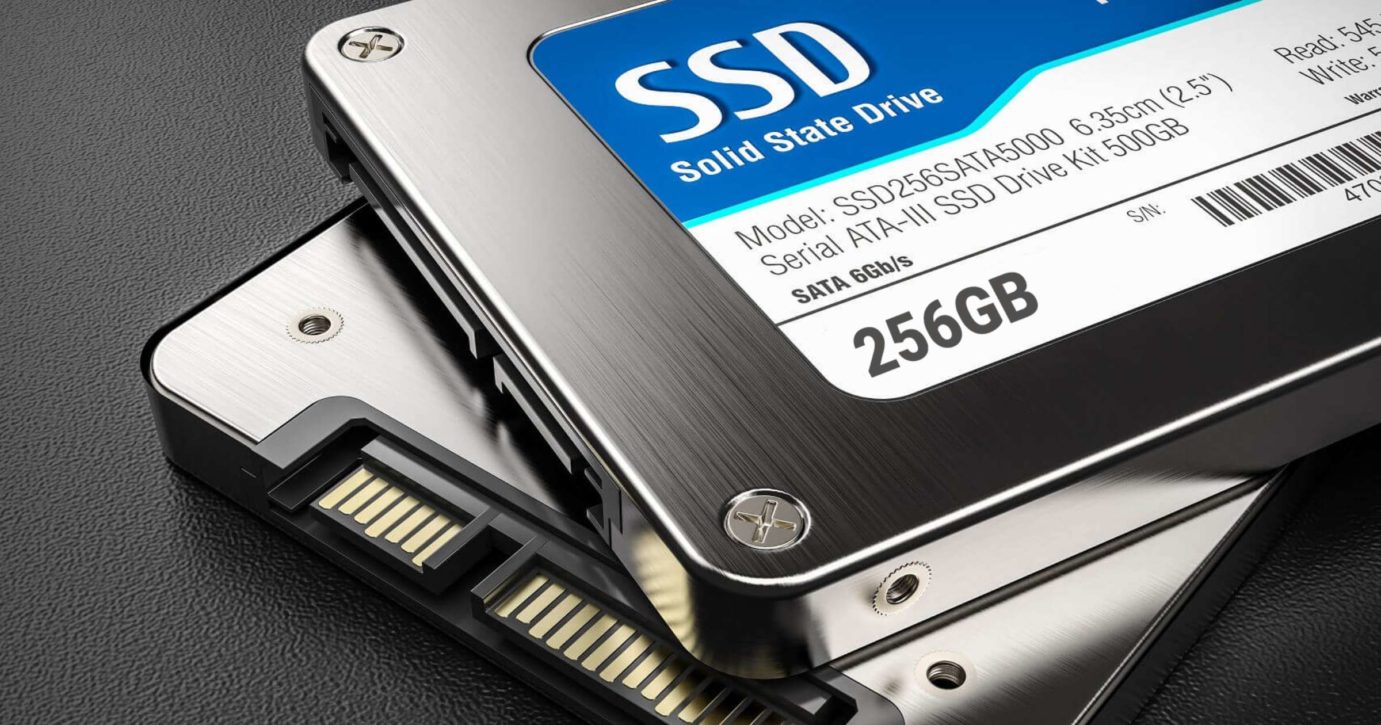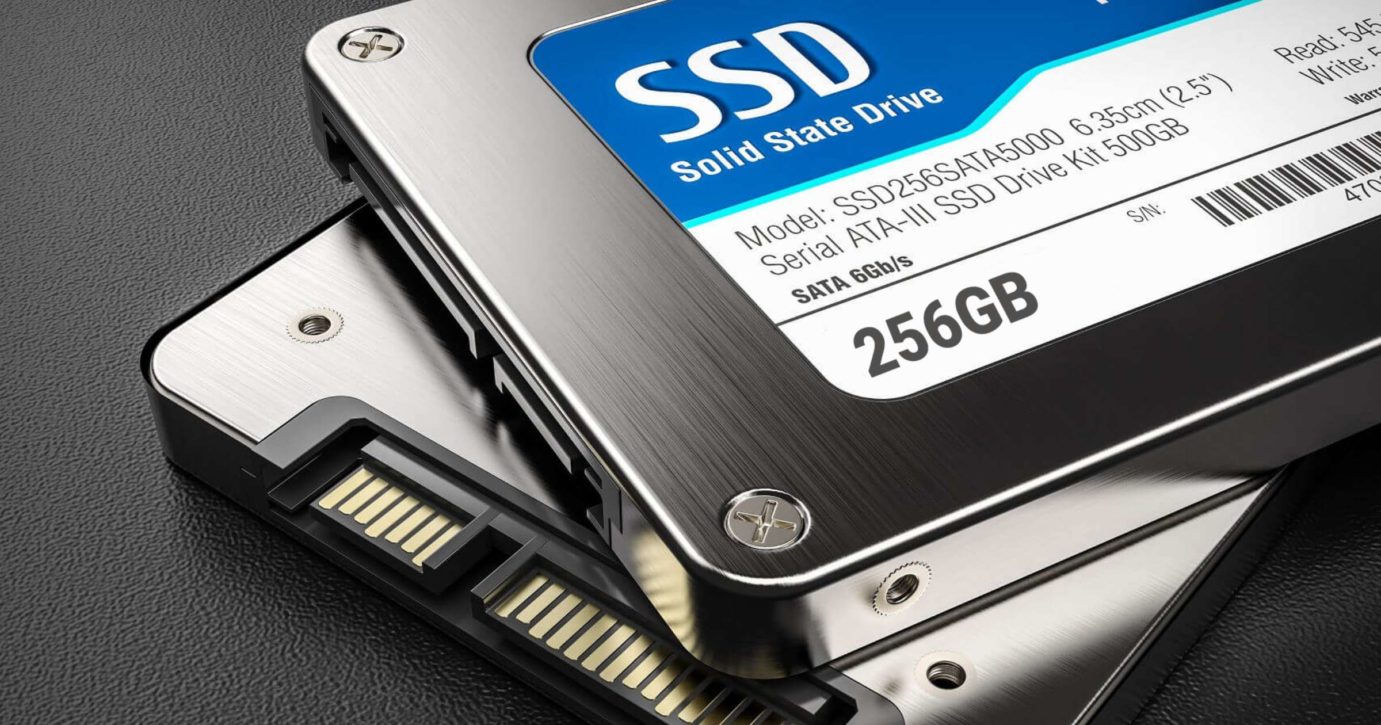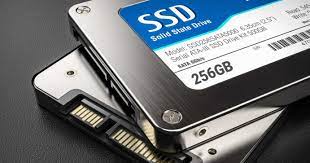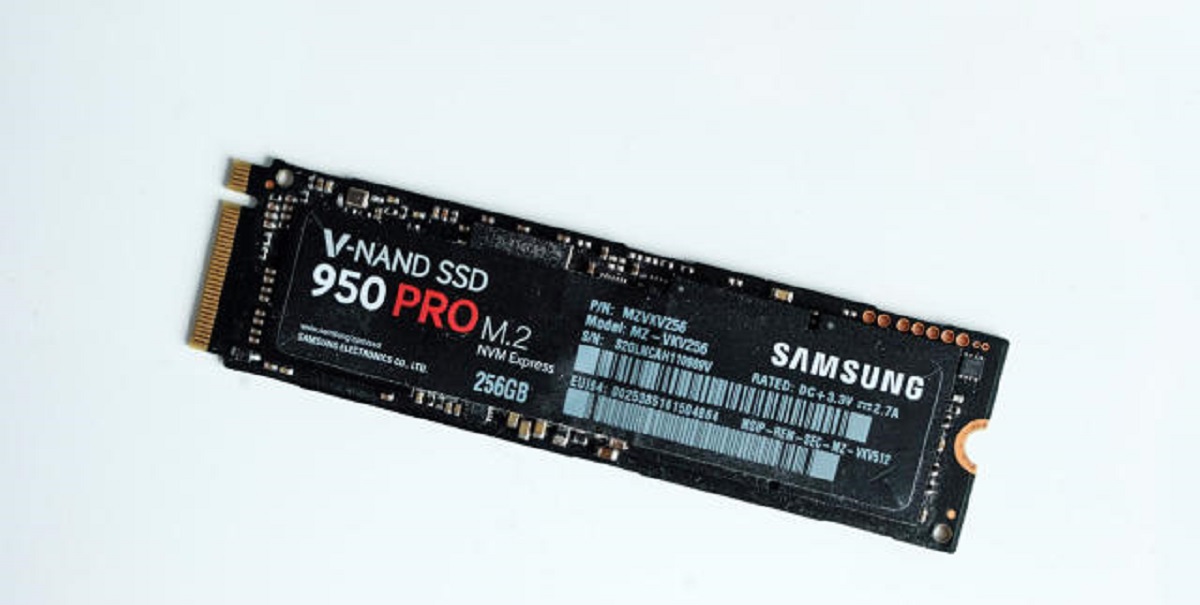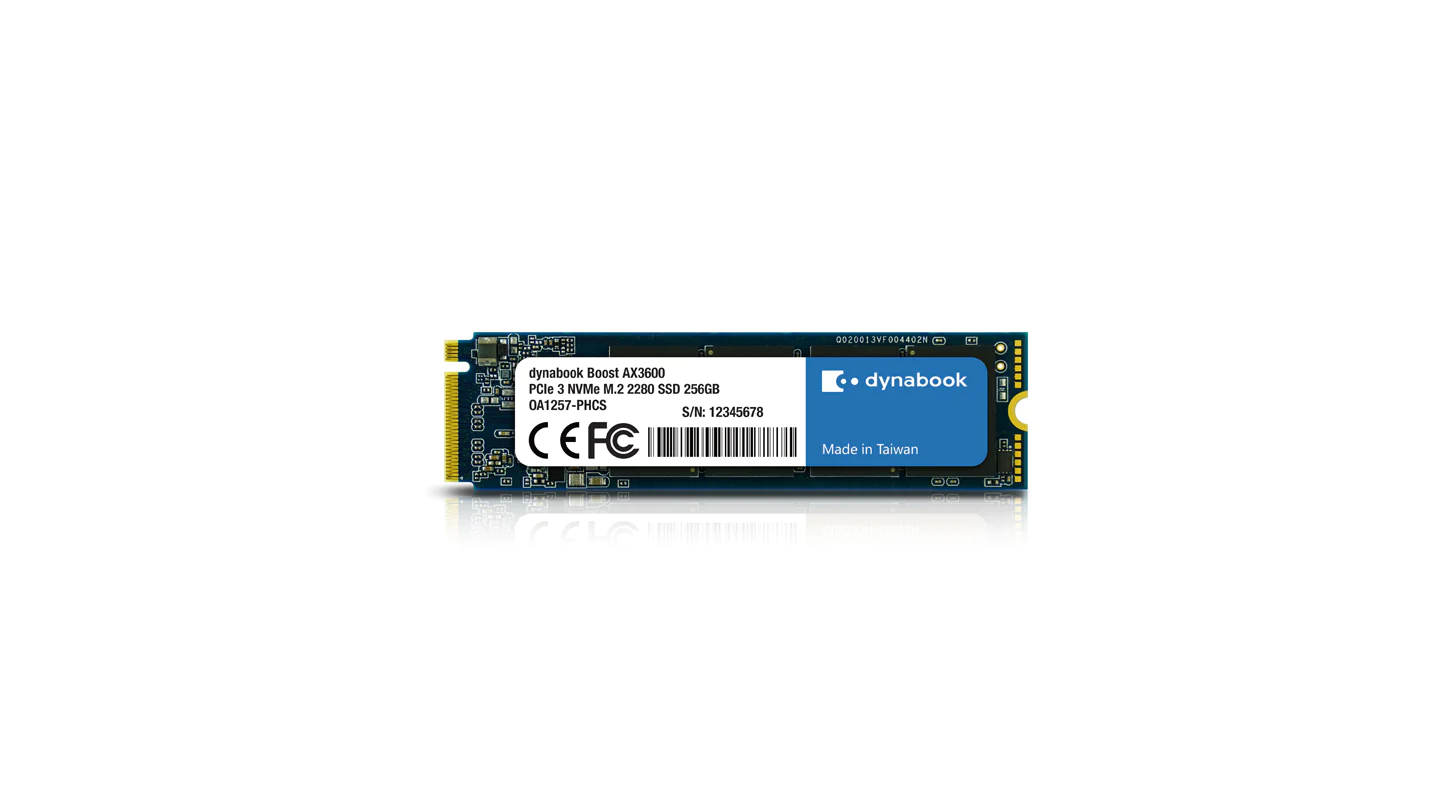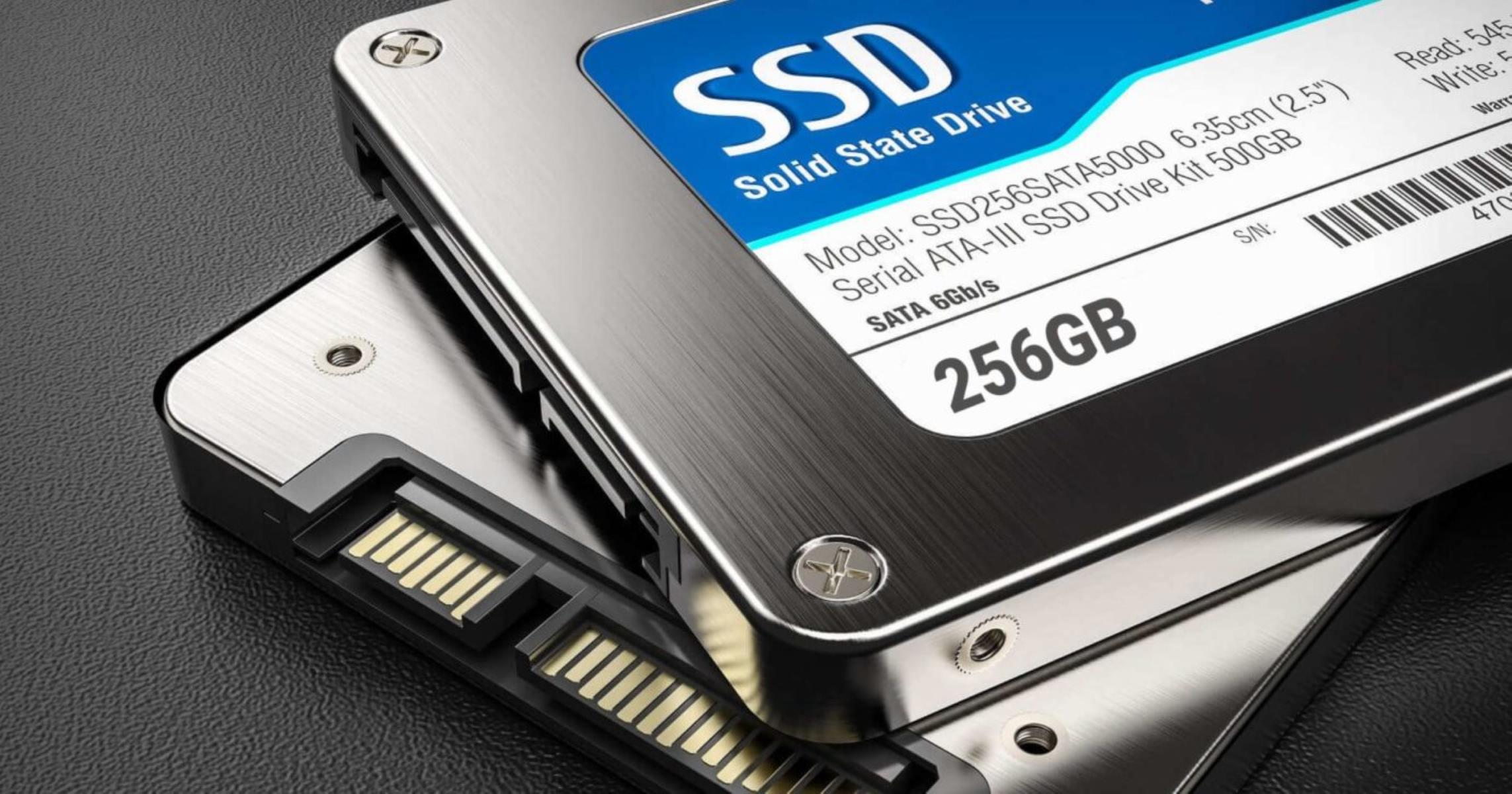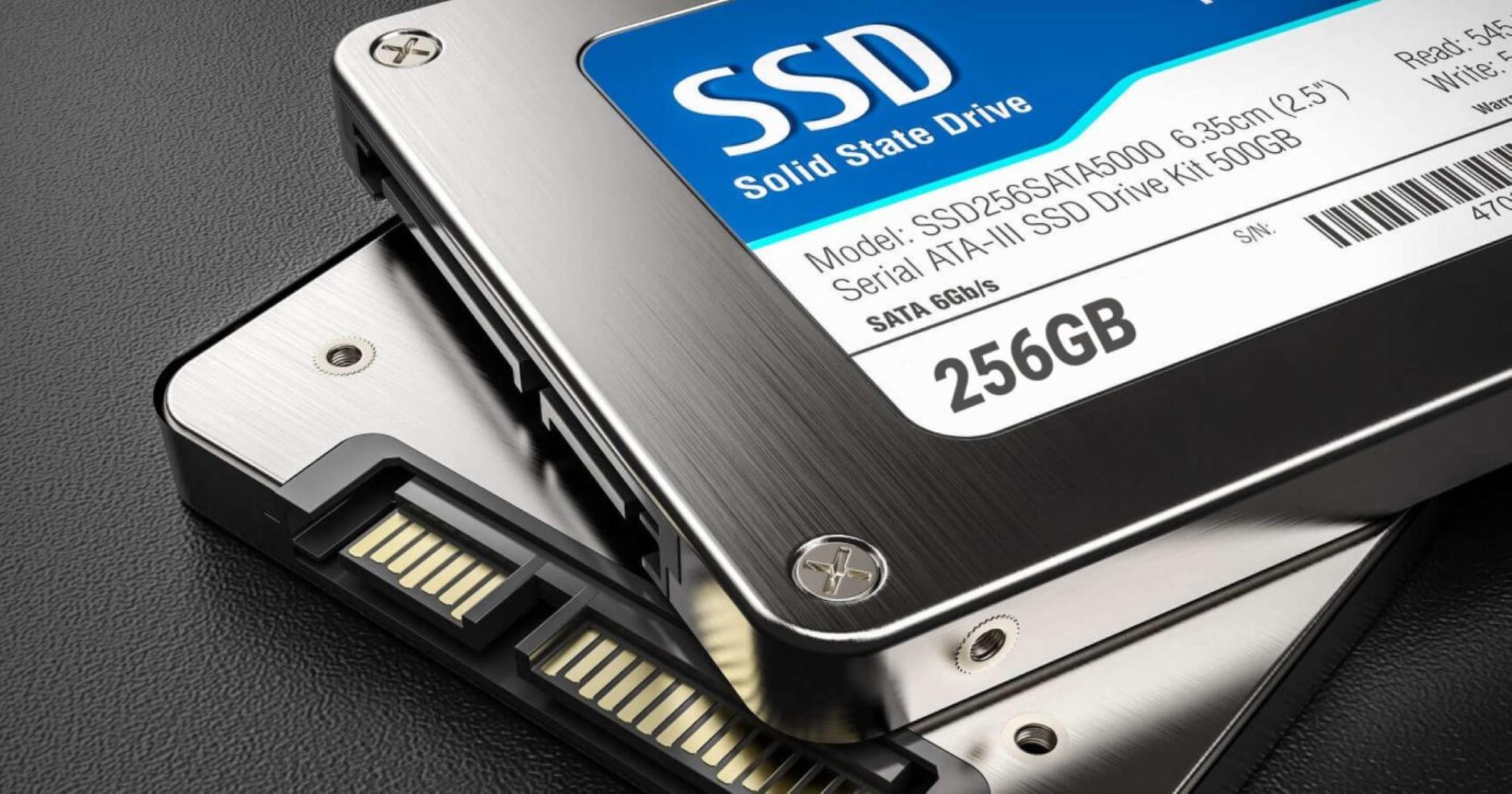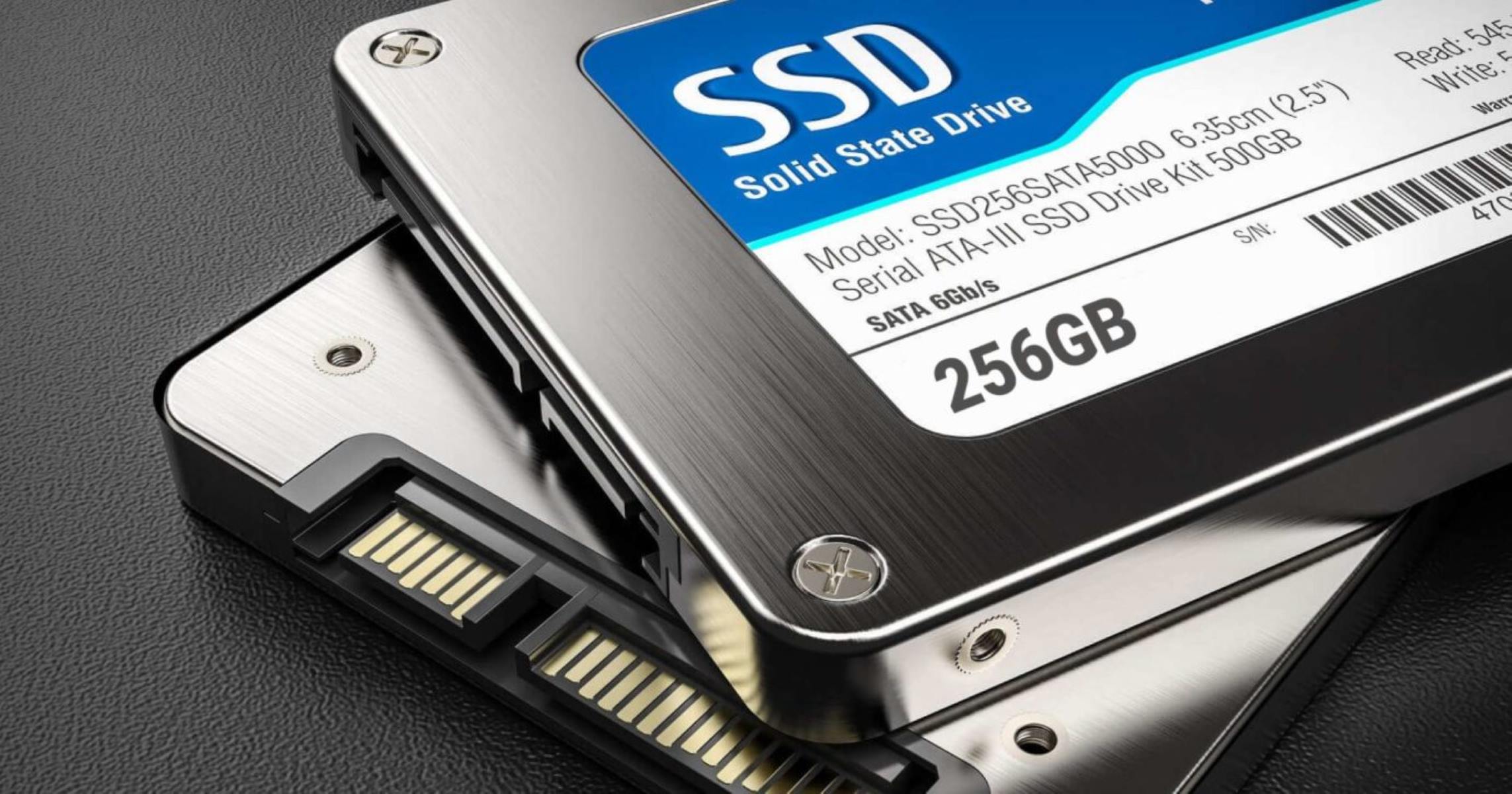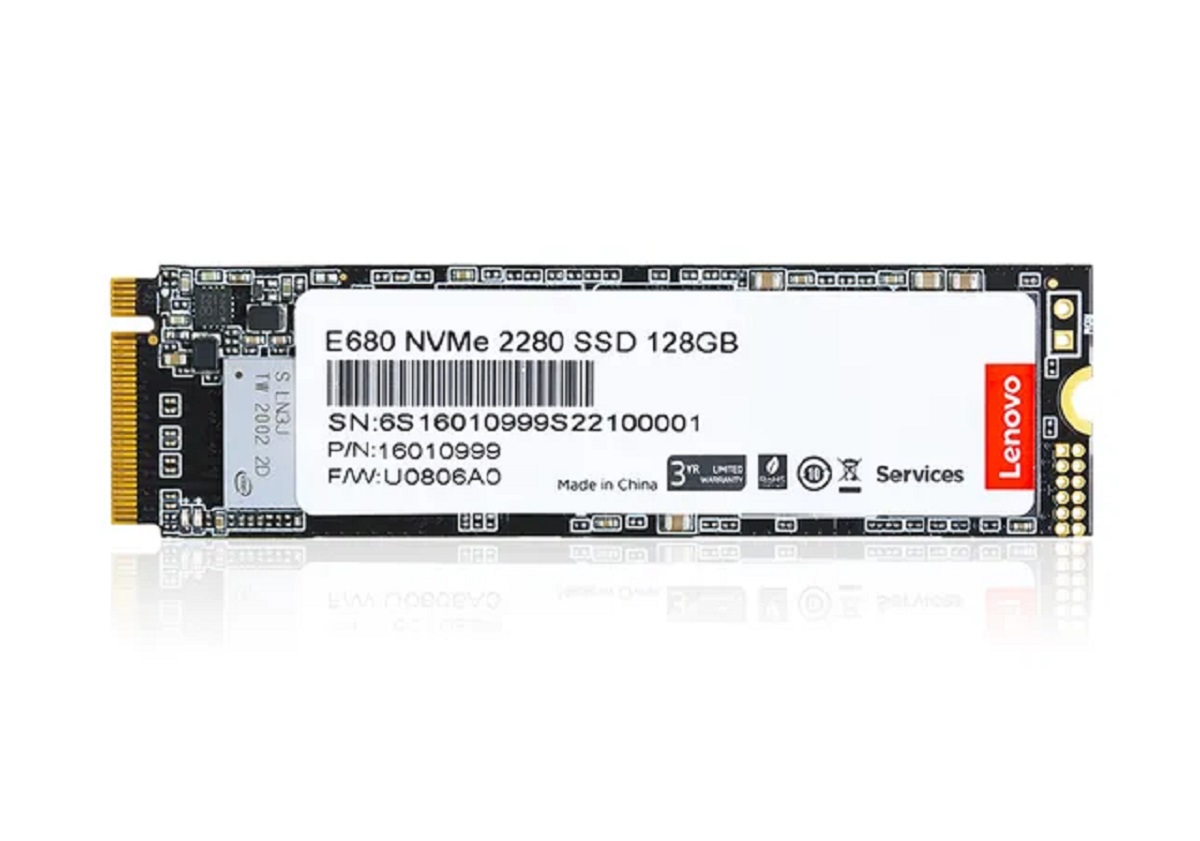What is an SSD?
Before we delve into the specifics of a 256GB SSD, it’s important to understand what an SSD is and how it differs from traditional hard drives.
An SSD, which stands for Solid State Drive, is a storage device that uses flash memory to store and retrieve data. Unlike traditional hard drives, which rely on spinning disks and mechanical components, an SSD has no moving parts.
This fundamental difference gives SSDs several advantages over traditional hard drives. First and foremost, SSDs are significantly faster. The absence of moving parts allows for almost instant access to data, resulting in quicker boot times and faster application launches. This speed boost can greatly improve the overall performance of your computer.
Another advantage of SSDs is their reliability. Because there are no moving parts, there is less chance of mechanical failure. This makes SSDs more durable and resistant to damage from drops, shocks, and vibrations. Additionally, SSDs consume less power and generate less heat compared to traditional hard drives, which can help extend the overall lifespan of your system.
While SSDs are generally more expensive than traditional hard drives, the prices have been steadily decreasing over time. This has made SSDs more affordable and accessible to everyday consumers. As a result, many computers and laptops now come equipped with SSDs as the primary storage solution.
Overall, SSDs offer a significant performance boost and improved reliability compared to traditional hard drives. Their faster speeds and increased durability make them an ideal choice for individuals who require efficient storage solutions.
How does an SSD work?
Understanding how an SSD works can help you comprehend its benefits and limitations. So, let’s take a closer look at the inner workings of an SSD.
The primary component of an SSD is the NAND flash memory, which is a non-volatile form of memory. This means that the data remains stored even when power is removed. The NAND flash memory is divided into cells, with each cell containing multiple layers for data storage.
When you save data to an SSD, it is stored in electrical charges within the cells. These charges represent the binary values of 0s and 1s, which make up the digital information. To retrieve the data, the SSD uses a controller that sends electrical pulses to the cells, enabling the reading and writing of data.
One notable aspect of SSD operation is the concept of wear leveling. Since NAND flash memory has a limited number of write cycles, wear leveling ensures that data is distributed evenly across the cells to prevent overuse of specific cells. This ultimately prolongs the lifespan of the SSD.
Another important feature of SSDs is the presence of cache memory, which serves as a temporary buffer for frequently accessed data. This cache memory can enhance the performance of the SSD, resulting in faster access to frequently used files and applications.
Due to the nature of NAND flash memory, which requires erasing before new data can be written, SSDs may experience slower write speeds compared to their read speeds. However, advancements in technology, such as the use of SLC (Single-Level Cell) and TLC (Triple-Level Cell) NAND, have mitigated this issue to some extent.
In terms of connectivity, SSDs commonly use the SATA (Serial ATA) interface or the more recent NVMe (Non-Volatile Memory Express) interface. The NVMe interface offers higher bandwidth and lower latency, enabling even faster data transfer speeds compared to SATA-based SSDs.
Understanding how an SSD works can help you appreciate its capabilities and make informed decisions about its usage. While there are certain limitations to be aware of, such as the limited write cycles, SSDs have proven to be a significant advancement in storage technology, delivering improved performance and reliability.
What is storage capacity?
Storage capacity refers to the amount of data that a storage device, such as an SSD, can hold. It is typically measured in terms of bytes, with common units being megabytes (MB), gigabytes (GB), and terabytes (TB).
Data comes in various forms, including documents, images, videos, applications, and more. Each type of data requires a certain amount of space to be stored. For example, a single high-resolution image can take up several megabytes, while a high-definition video can occupy several gigabytes.
It’s important to note that storage capacity may vary depending on the drive’s file system and formatting. The advertised capacity of a storage device might not be entirely available for user data due to formatting overhead and system files.
When considering storage capacity, it’s essential to assess your needs based on the type and size of files you typically work with. If you primarily deal with documents and light media files, a lower storage capacity may be sufficient. On the other hand, if you handle large video projects, high-resolution images, or require extensive storage for applications and games, a higher storage capacity would be necessary.
Storage capacity also impacts the overall performance of the storage device. As the drive fills up with data, its performance can be affected. Therefore, it is advisable to leave a certain buffer of free space on your drive to maintain optimal performance.
With the increasing file sizes of media and the growing storage demands of modern applications, it’s becoming more common for users to require larger storage capacities. This is where SSDs with higher capacities, such as a 256GB SSD, come into play.
Ultimately, the choice of storage capacity depends on your specific needs and budget. It’s important to strike a balance between having enough storage space for your data and not overpaying for unused capacity. Assessing your requirements and considering factors like file types, usage patterns, and future growth will help you determine the ideal storage capacity for your needs.
Understanding SSD storage capacity
The storage capacity of an SSD determines how much data you can store on the drive. When it comes to SSDs, storage capacity can range from a few gigabytes to several terabytes. Understanding SSD storage capacity is crucial to ensure you choose a drive that can meet your storage needs.
It’s important to note that the advertised storage capacity of an SSD might not be the exact amount of usable space available to you. Some space is reserved for system files and formatting, which reduces the total usable capacity.
SSD storage capacity is typically indicated in powers of 2, with units such as kilobytes (KB), megabytes (MB), gigabytes (GB), and terabytes (TB). For example, a 256GB SSD has a capacity of 256 gigabytes, which is approximately 256,000 megabytes or 268,435,456 kilobytes.
While a higher storage capacity allows you to store more data, it’s essential to consider your actual storage requirements. Keep in mind that not all data types occupy the same amount of space. For example, text-based documents generally have smaller file sizes, while multimedia files like images, videos, and audio files can be significantly larger.
Another factor to consider is the operating system and software requirements. Certain applications and operating systems require a minimum amount of storage space to function properly. It’s crucial to allocate enough space for these system requirements to ensure optimal performance.
Additionally, it’s a good practice to leave some free space on your SSD. This gives your drive room to perform background tasks, wear leveling, and other maintenance operations. Experts recommend keeping at least 10-20% of the total capacity free to maintain ideal performance and extend the lifespan of your SSD.
Future-proofing is also a consideration when choosing SSD storage capacity. As the size of files and applications continue to increase, it may be wise to opt for a slightly higher capacity than your immediate needs. This will provide room for growth and prevent the need for frequent upgrades.
In summary, understanding SSD storage capacity involves considering the usable space, file sizes, system requirements, and future needs. It’s important to strike a balance between having enough space for your current data and allowing room for future growth. Assess your storage requirements, consider the types of files you’ll be working with, and factor in any system requirements to choose an SSD with an appropriate storage capacity.
What does 256GB SSD mean?
A 256GB SSD refers to a solid state drive with a storage capacity of 256 gigabytes. This means that the drive can store up to 256 billion bytes of data.
The “GB” in 256GB stands for gigabytes, which is a unit of digital information storage. One gigabyte is equal to 1,073,741,824 bytes. To put it into perspective, a 256GB SSD can store approximately:
- Over 68,000 high-resolution photos (4MB each)
- Around 56 hours of high-definition video footage (at an average bitrate of 8 Mbps)
- More than 512 hours of music (at 320 kbps)
- Countless documents, software programs, and applications
It’s important to note that the actual usable space on a 256GB SSD might be slightly less due to formatting and system files. However, the difference is typically negligible and does not significantly impact overall storage capacity.
The storage capacity of a 256GB SSD can vary depending on the specific drive and manufacturer. While 256GB may be considered a mid-range capacity compared to larger SSDs, it is still more than sufficient for most users’ daily storage needs. It offers a good balance between storage space and affordability.
However, it’s essential to consider your specific usage requirements before opting for a 256GB SSD. If you work with large multimedia files, such as high-resolution videos or RAW image files, you may require a higher capacity SSD. Similarly, if you frequently install resource-intensive applications or have a large collection of games, you might need additional storage space.
On the other hand, if you primarily handle documents, web browsing, casual gaming, and general computer use, a 256GB SSD can provide ample storage capacity. It allows you to store a significant amount of files, applications, and media without feeling constrained by insufficient storage.
Ultimately, the choice of a 256GB SSD depends on your specific needs and budget. Consider the types of files you work with, your usage patterns, and any future growth expectations. This will help you determine if a 256GB SSD is the right storage solution for you.
Determining how much storage you need
When it comes to determining the appropriate amount of storage you need, several factors come into play. Understanding your usage patterns and the types of files you work with can help you make an informed decision.
First, consider the types of files you regularly handle. If you primarily work with documents, spreadsheets, and lightweight files, a lower storage capacity may suffice. However, if you frequently deal with large media files, such as high-resolution photos, videos, or audio recordings, you will likely require more storage space.
Next, think about your usage habits. Do you store a large collection of movies, music, or games on your computer? Are you a professional photographer or videographer who needs to store and edit large files? If so, a higher storage capacity would be more suitable to accommodate your storage needs.
It’s also important to consider any future storage requirements. As technology advances, file sizes for media and applications tend to increase. Therefore, it’s wise to anticipate your future needs and opt for a storage capacity that allows for potential growth.
Additionally, take into account any special requirements or circumstances. For example, if you use your computer extensively for work, you may need space for software programs, databases, and project files. Similarly, if you use your computer for gaming, you will need sufficient storage for game installations and updates.
Don’t forget to factor in the operating system and software requirements. Different operating systems and applications have varying storage requirements. Ensure that you allocate enough space for these system files and updates to avoid running into storage limitations.
Lastly, consider your budget. Higher storage capacities often come with a higher price tag. Assess your budget constraints and prioritize your storage needs accordingly.
To determine the ideal storage capacity, analyze your current storage usage by checking the size of your existing files and folders. Take note of any fluctuations or trends in data growth. This assessment will provide valuable insights into your storage requirements.
It’s important to strike a balance between having enough storage space to meet your current needs and allowing for future growth. Overestimating may result in wasted space and unnecessary expenses, while underestimating may lead to storage limitations and potential data loss.
By carefully evaluating your file types, usage patterns, future needs, special requirements, software demands, and budget, you can make an informed decision on how much storage capacity you truly need.
What can you store on a 256GB SSD?
A 256GB SSD offers a substantial amount of storage space that can accommodate a wide range of files and applications. Let’s explore what you can store on a 256GB SSD:
Documents: A 256GB SSD can easily store thousands of documents, including text files, PDFs, presentations, and spreadsheets. Whether it’s for work, school, or personal use, you’ll have plenty of space to organize and store your important files.
Media files: You can store a significant collection of media files on a 256GB SSD. This includes high-resolution photos, music albums, audiobooks, podcasts, and small video files. Keep in mind that the number of media files you can store will vary depending on their file sizes.
Applications: With a 256GB SSD, you can install and store a diverse range of applications. This includes productivity suites, design software, video editing programs, web browsers, and more. However, remember to consider the space requirements of each application when calculating available storage.
Games: Gaming enthusiasts can enjoy a selection of games on a 256GB SSD. While some modern games can be quite large, a 256GB SSD can still accommodate a decent number of games. However, if you’re an avid gamer with a vast library, you may need to manage your game installations more carefully.
Operating system: Installing an operating system such as Windows or macOS on a 256GB SSD is a common choice. This allows for quick boot times and responsive system performance. It’s important to note that the operating system itself will consume a portion of the storage capacity.
System files and backups: Space should be allocated for system files and backup purposes. These include system updates, recovery partitions, and backup copies of important files. It’s good practice to reserve a portion of the SSD’s capacity for these purposes.
Virtual machines: If you frequently work with virtual machines for software development, testing environments, or running other operating systems, a 256GB SSD can provide ample space for your virtual machine images and related files.
Remember that the exact number of files you can store on a 256GB SSD will depend on various factors, including file sizes, the efficiency of compression algorithms, and the presence of any redundant or duplicate files. Additionally, the storage capacity may be slightly reduced due to formatting and system files.
Managing your storage space effectively is crucial to ensure optimal performance and accommodate your storage needs. You can consider techniques such as regular file organization, cloud storage for less frequently accessed files, or external storage devices for large media libraries.
In summary, a 256GB SSD provides sufficient space for storing a diverse range of files, including documents, media files, applications, and games. However, it’s advisable to plan and manage your storage effectively to make the most out of the available capacity.
Is 256GB enough for your needs?
Deciding whether a 256GB SSD is enough for your needs depends on your specific requirements and usage patterns. While 256GB can provide ample storage for many users, it may or may not be sufficient for everyone.
If you primarily use your computer for basic tasks such as web browsing, document editing, and email, a 256GB SSD should be more than enough. These activities tend to have smaller file sizes, and you will have ample space for storing documents, photos, and a reasonable number of applications.
However, if you work with large media files, such as high-resolution photos or 4K videos, or regularly edit and store large databases or complex projects, a 256GB SSD may fill up quickly. In such cases, you may need to consider additional storage options, such as external hard drives or cloud storage, to offload some of your larger files.
Gaming enthusiasts should also take into account the storage requirements of modern games. Larger game installations, coupled with regular updates and expansions, can quickly consume storage space. If you have an extensive game library or frequently download new titles, a larger capacity SSD or external storage might be more suitable.
Furthermore, if you work with virtual machines or require multiple operating systems for software development or testing purposes, a 256GB SSD may limit your ability to efficiently store and manage these environments. In such cases, a higher capacity SSD or utilizing external storage for virtual machine images may be necessary.
Consider your specific needs and usage patterns when evaluating whether 256GB is enough for you. Take into account the types of files you work with, the size and number of applications you use, and any future growth or expansion you anticipate. Additionally, consider the availability of alternative storage options, such as cloud storage or external drives, to supplement your storage needs.
Finally, it’s important to note that managing your storage space is crucial regardless of the capacity you choose. Regularly removing unnecessary files, optimizing storage settings, and utilizing cloud-based or external storage can help you make the most out of a 256GB SSD and keep it running smoothly and efficiently.
In summary, a 256GB SSD can be sufficient for many users, especially those engaged in everyday tasks and moderate file storage needs. However, it’s vital to assess your specific requirements and consider factors like file sizes, application demands, and future growth to determine if a 256GB SSD will meet your needs or if a larger capacity storage solution is necessary.
Tips for managing storage on a 256GB SSD
Effectively managing storage on a 256GB SSD is essential to optimize performance and make the most out of the available space. Here are some tips to help you efficiently manage your storage:
Regularly clean up and organize files: Take the time to review and remove unnecessary files and applications. Delete duplicate files, old downloads, and temporary files to free up valuable space. Organize your files into folders to improve accessibility and make it easier to locate specific files when needed.
Utilize cloud storage: Offloading files to cloud storage services like Google Drive, Dropbox, or OneDrive can help free up SSD space. Move files that you don’t need immediate access to, such as old documents or media files, to the cloud. This way, you can access them when required without taking up space on your SSD.
Consider external storage options: Utilize external storage devices like external hard drives or USB flash drives for storing larger files or infrequently accessed data. Offloading movies, music libraries, and other large files to external storage can help create more space on your 256GB SSD.
Manage game installations: If you’re a gamer, managing game installations can be crucial. Only install the games you actively play and remove those you no longer play or have completed. Alternatively, consider dedicated external storage for your game library to avoid consuming precious space on your SSD.
Optimize software and application settings: Some applications allow you to customize installation locations and data storage locations. Take advantage of these settings to install applications and store data on secondary drives or external storage, freeing up space on your SSD.
Be mindful of downloads and offline media: Keep an eye on downloads, such as large video files or software installers, that can quickly consume storage space. Once you have finished with these files, consider deleting them to recover space. Additionally, be cautious with offline media playback, as it may generate temporary files that can accumulate and occupy your SSD’s storage.
Regularly empty the recycling bin/trash: Don’t forget to empty the recycling bin/trash on your computer. Deleted files still occupy space on your SSD until they are permanently deleted. Regularly emptying the recycling bin/trash will ensure that the space is freed up for other data.
Monitor and manage system backups: Check the settings for system backups and ensure they are being managed efficiently. Adjust backup schedules and retention policies to avoid unnecessary duplication and storage utilization on your SSD.
Consider installing only essential software and applications: Evaluate the necessity of every software and application you install. Avoid installing unnecessary or rarely used programs. Install only what you genuinely use to save space and improve the performance of your 256GB SSD.
By implementing these storage management tips, you can effectively utilize the available space on your 256GB SSD and maintain optimal performance. Regularly review and manage your files, leverage cloud and external storage options, optimize software settings, and be mindful of your download and installation habits. With proper management, you can make the most out of your 256GB SSD for your specific storage needs.
Conclusion
The storage capacity of a 256GB SSD provides a versatile and efficient solution for many users. From storing documents, media files, applications, and games to providing fast and reliable performance, a 256GB SSD offers a suitable balance between storage capacity and affordability.
It’s crucial to understand your specific needs and consider factors such as file sizes, usage patterns, and future growth when determining if 256GB is enough for your storage requirements. Remember to organize and optimize your storage, utilize cloud and external storage options when necessary, and make informed choices about the software and applications you install.
If you find that a 256GB SSD falls short of your needs, it may be worth considering higher-capacity storage options or utilizing additional external storage solutions to supplement your SSD’s capacity. Regularly evaluating your storage needs and managing your files efficiently will help you make the most out of the available capacity.
Ultimately, the choice of storage capacity depends on your specific needs, budget, and future growth expectations. Consider the types of files you work with, your usage habits, and any special requirements to determine the ideal storage capacity for your unique situation.
With proper management and consideration of your storage needs, a 256GB SSD can provide efficient and reliable storage for a variety of tasks and file types. Whether you are a casual user, a creative professional, or a gamer, a 256GB SSD offers a balance between performance and affordability, making it a solid choice for many individuals.







